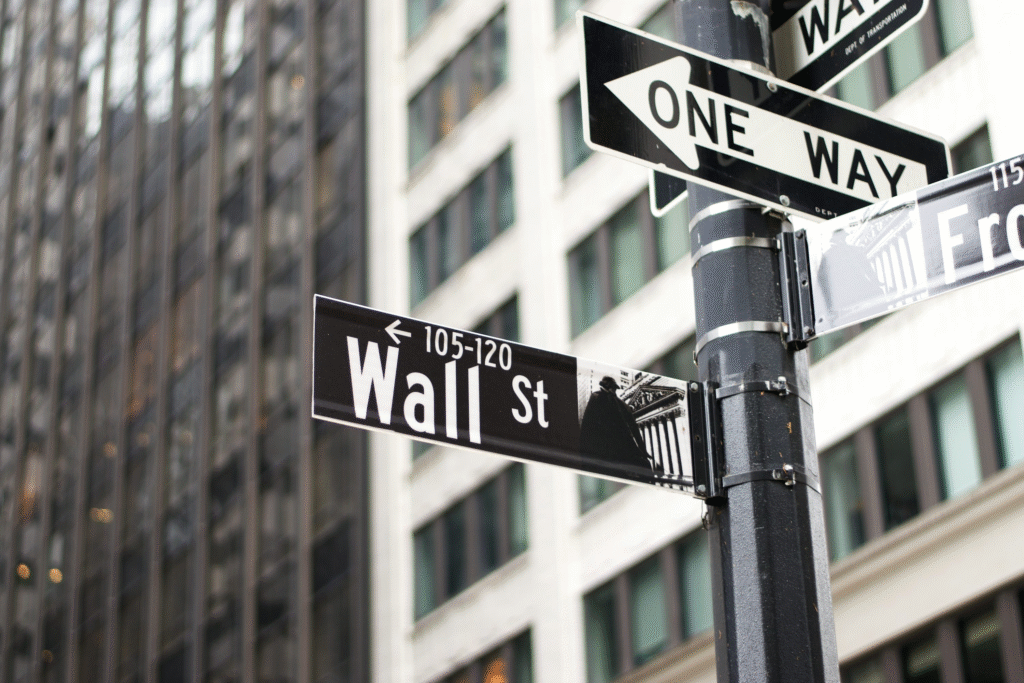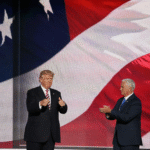The U.S. stock market soared to record highs after investors grew hopeful about a possible trade deal between the United States and China. Positive talks between the two biggest economies lifted confidence, while traders also focused on major tech company earnings and the Federal Reserve’s expected interest rate cut.
The atmosphere on Wall Street was filled with energy and excitement on Monday morning. Investors watched closely as U.S. stock futures climbed to new record highs. The main reason behind this rise was the growing hope that the United States and China were finally close to reaching a trade deal. This news gave a big push to the market, as traders became more confident and willing to take risks again.
According to reports, at 6:22 a.m. Eastern Time, the Dow Jones Industrial Average futures were up by 258 points, or 0.54%. The Nasdaq 100 futures jumped by 332.5 points, or 1.3%, while the S&P 500 futures gained 59.75 points, or 0.88%. These numbers showed how strongly investors believed that better days might be ahead for the global economy if the trade talks went well.
For months, trade tensions between the world’s two largest economies had made markets unstable. Tariffs, export bans, and sharp words from both sides had hurt business confidence. So, when negotiators from the U.S. and China revealed that they had outlined a framework for a deal, investors around the world breathed a sigh of relief. The news hinted that the U.S. might pause its plans to increase tariffs, and China could ease restrictions on its rare earth exports — materials that are crucial for making electronics and other advanced products.

A trade deal between these two nations could have a huge global impact. China and the U.S. are the largest economies in the world, and their trade relationship affects everything from smartphone prices to car manufacturing costs. The announcement that both countries were finally showing signs of cooperation gave investors fresh optimism.
Chris Weston, the head of research at Pepperstone, summed up the mood in the market when he said, “Donald Trump’s Asia tour takes centre stage this week, with global markets fixated on his highly anticipated meeting with Chinese President Xi Jinping on Thursday.” Weston also noted, “Markets had largely viewed this as the higher-probability outcome, so the news won’t come as a major surprise and is partly priced.” His words reflected that investors were already expecting some progress, but the confirmation still boosted confidence.
The timing of these talks was especially important. The week was packed with key events, including earnings announcements from major U.S. technology companies and an expected interest rate cut from the Federal Reserve. These factors together created a hopeful mood among traders. A rate cut from the Fed generally helps boost stock prices because it makes borrowing cheaper, encouraging companies to expand and consumers to spend more.
However, not every sector saw gains. Shares of rare earth mining companies dropped after reports suggested that China might relax its export restrictions as part of the possible deal. Rare earth materials are vital for industries like renewable energy, electric vehicles, and electronics, and any change in China’s export policy can affect global prices. While these companies faced some losses, the broader market remained positive overall.
In contrast, U.S.-listed stocks of Argentine companies performed well following the election victory of Javier Milei, a politician known for his free-market views. Investors seemed to believe that his win could bring economic reforms and new business opportunities in Argentina, lifting confidence in that region.
Back in the U.S., all eyes were on the meeting between President Donald Trump and Chinese President Xi Jinping, scheduled for Thursday. Many analysts described it as a “make or break” moment for global trade relations. If both leaders managed to agree on key terms, it could mark the beginning of a calmer and more stable phase for international trade. But if talks failed, markets could quickly turn volatile again.
For now, investors seemed to be betting on good news. The rise in futures reflected strong optimism. Traders on the New York Stock Exchange floor were busy analyzing data and preparing for what could be a week full of surprises. There was a sense that the markets were entering a turning point — one where cooperation might replace conflict, at least for a while.
The trade war between the U.S. and China has been one of the biggest economic stories of the past few years. It has influenced everything from stock prices to the cost of daily goods. Businesses in both countries have struggled with uncertainty, and global supply chains have faced disruptions. A deal, even a temporary one, could restore some balance and open new opportunities for trade and investment.
Experts also pointed out that a trade truce could benefit industries like technology, manufacturing, and agriculture. American farmers, for instance, have been among the hardest hit by Chinese tariffs. A better relationship with China could mean more exports of products like soybeans and corn. Similarly, technology companies could find it easier to sell their products and components, improving their earnings in the months ahead.
Even though the news of the deal framework created excitement, analysts warned that the situation was still delicate. Trade talks between the two countries have broken down before, and there is always a chance that disagreements could return. Both nations have strong political and economic interests, and reaching a long-term agreement would require compromises on both sides.
Still, the mood on Wall Street remained upbeat. The combination of strong corporate earnings, the Federal Reserve’s supportive policies, and improving global trade conditions gave investors reasons to stay positive. For ordinary people, this could mean a stronger economy, more jobs, and higher consumer confidence in the coming months.
In the world of finance, optimism can be powerful. Even the hope of progress can lift markets and create momentum. That’s what seemed to be happening this week. As the U.S. and China prepared for a crucial meeting, investors across the globe were watching closely — hoping that after years of tension, cooperation might finally take its place.
As Chris Weston mentioned, markets had already expected some progress. But sometimes, even when the outcome is predicted, seeing it unfold brings fresh energy. And that’s exactly what Wall Street was feeling — a renewed sense of belief that perhaps this time, the world’s biggest economies might choose peace over conflict, trade over tariffs, and growth over uncertainty.


